"How beautiful is sunset, when the glow Of Heaven descends upon a land like thee, Thou Paradise of exiles, Italy! Thy mountains, seas, and vineyards, and the towers Of cities they encircle!" - P. B. Shelley, from the poem 'Julian and Maddalo: A Conversation'
The Scola Tower (Torre Scola on Italian), originally known as the tower of St. John the Baptist (Torre di San Giovanni Battista), is a military structure situated in the western part of the Gulf of La Spezia (or Gulf of Poets) in the coastal region of Liguria in north-western Italy. The tower, or what was left of it, is more than 42 feet tall and it looks like as it is rising from the sea. It was constructed by the citizens of Genoa (actually by the Senate of the Republic of Genoa) in 1606 on a rock in front of the northeastern side of the island of Palmaria in the town of Porto Venere, now in the Province of La Spezia.
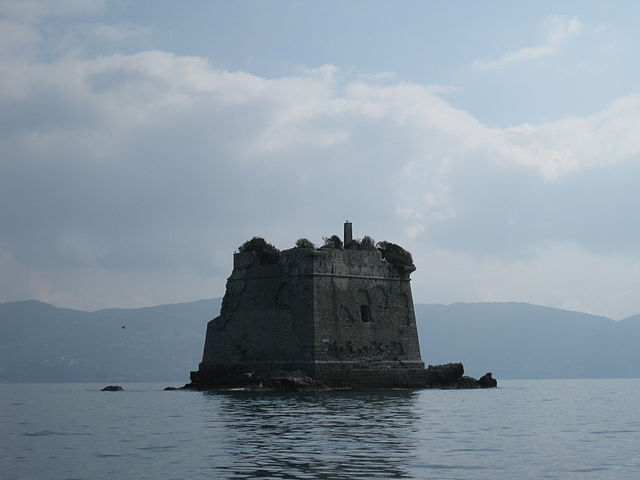
It was one of the many towers originally designed as part of a large defensive system constructed on the Ligurian coast in order to provide protection from the enemies. Its main purpose was to protect the cove Olivo on the Palmaria island, but also the towns of Porto Venere and Lerici. During this period the Portovenere Fortress was also built, the San Giorgio castle in La Spezia was enlarged and the castle of Lerici was strengthened. Years later after its construction, it was named Torre Scola after the Palmaria island’s tip in front of it.
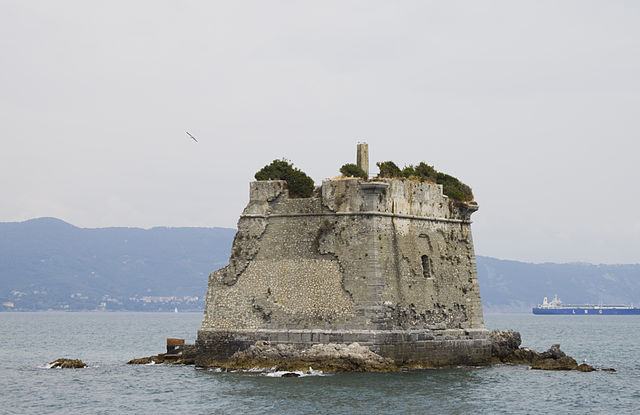
The Scola Tower is pentagonal in shape. It was built with large blocks of square stone and has a thickness of the walls of approximately 4 feet. Knowing this fact it became very obvious why a significant part of the architecture of the structure has survived the turbulent events and the passage of the time. Its corners are topped with a turret and an observational opening for the 10 canons which were meant to protect the area from attacks from the sea. The fort was designed to accommodate 8 soldiers (including a bomber (master “bombardero”) and their captain).
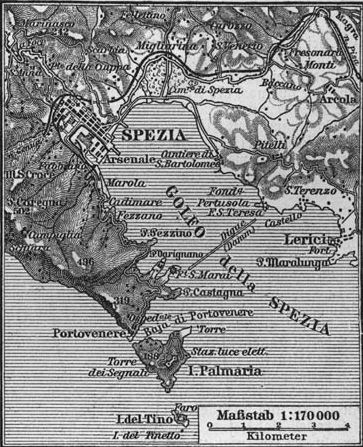
The gulf saw real action at the beginning of the 19th century when the British tried to remove Napoleon’s troops out of the region. The British bombardment seriously damaged the tower during the naval battle held between the French and the British fleets on 23rd June 1800. A significant part of the structure was broke down and it was not functional any more. Very soon it was completely abandoned. Throughout the years the national threats disappeared and thus the tower lost its defensive purpose.
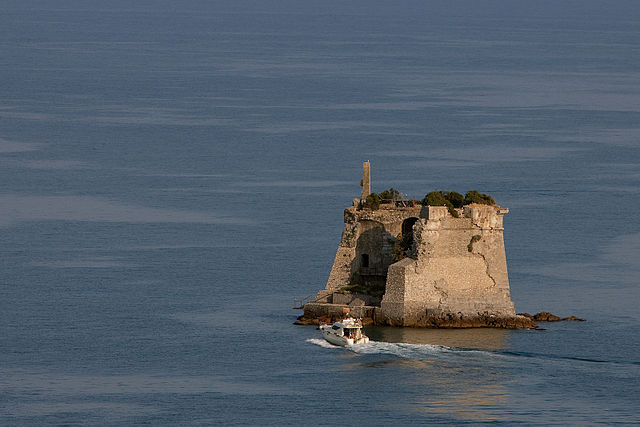
For some years it was used by the Marina Militare (the Italian Navy) for target practice. There can be still seen some signs of the sheelings. In 1915 the officials planned its demolition. But luckily, the threat of demolition caught the interest of Ubaldo Mazzini, who was born in La Spezia in 1868. He was a poet, an intellectual, a journalist and a historian, and at the time a local official of the Ministry of Education. The historical value of the ruined fortification was finally acknowledged and it was decided this precious monument from the recent past to be saved for future generations. Very soon the fortress was turned into a beacon. Between 1976 and 1980, it was systematically restored and turned into a popular tourist attraction.
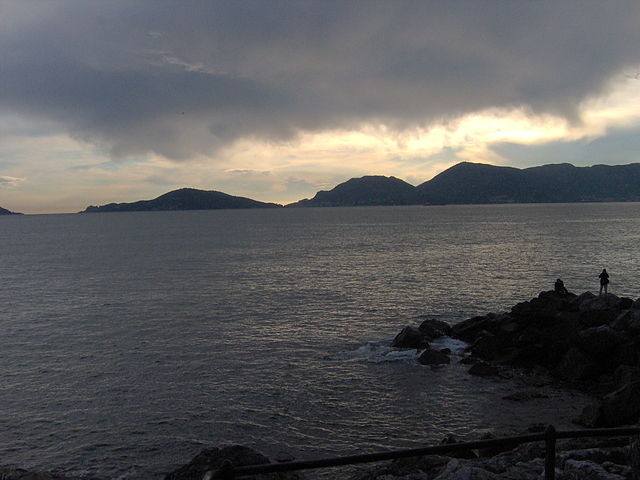
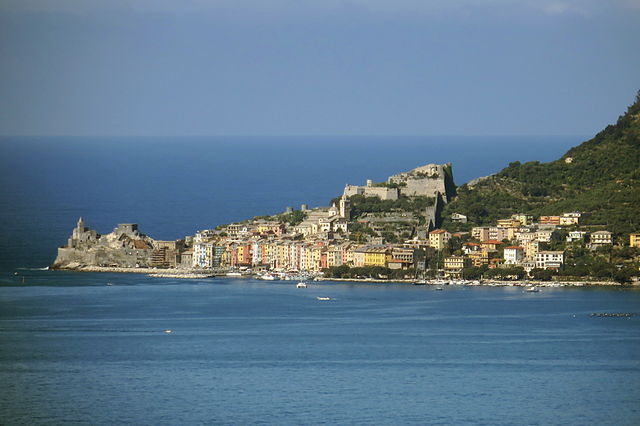
Today the Scola Tower continues to fascinate visitors with its dramatic and extraordinary beauty. Without doubt of a shadow, it is one of the most characteristic features in the Gulf of Poets and certainly one of the most photographed sites in the area. Parts of the ruined tower are overgrown with vegetation, especially the interior and the top, and this gives more magnificence to the already magnificent appearance of the structure. The Gulf of La Spezia (Golfo della Spezia) is also known as the Gulf of Poets (Golfo dei Poeti) because throughout the centuries many famous artists, poets and writers were attracted by its peaceful beauty and drew inspiration here.
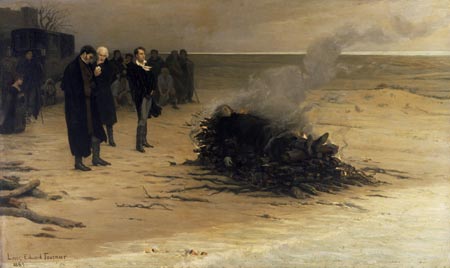
During their tour d’Italy, Percy Bysshe Shelley and Mary Shelley stayed in an isolated old boathouse called Casa Magni in the town of Lerici (on the eastern part of the Gulf of La Spezia) from April 1822 until P. B. Shelley’s death. On 8 July 1822, Percy Bysshe Shelley’s new vessel, Don Juan, was caught in a sudden storm in the Gulf of Spezia while he was sailing from Livorno to Lerici. He was returning from Livorno where he met Lord Byron and Leigh Hunt. Unfortunately, Shelley, his friend Edward Williams and the 18-year-old boatman Charles Vivian drowned.
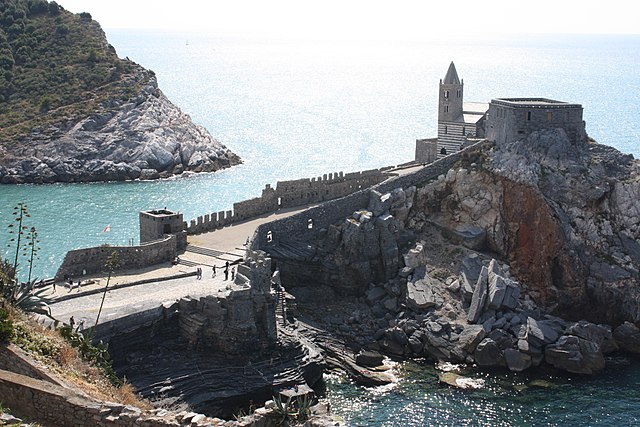
Shelley’s body washed ashore weeks later on a beach at Viareggio, situated between Livorno and Lerici. He was cremated on the same beach and in March 1823 his ashes were taken to the Protestant Cemetery in Rome. Percy Shelley wrote The Triumph of Life here. Perhaps some of his last verses were written as an inspiration of the Gulf of La Spezia. His last work The Triumph of Life was left unfinished and many of his papers were with him when the boat sunk.
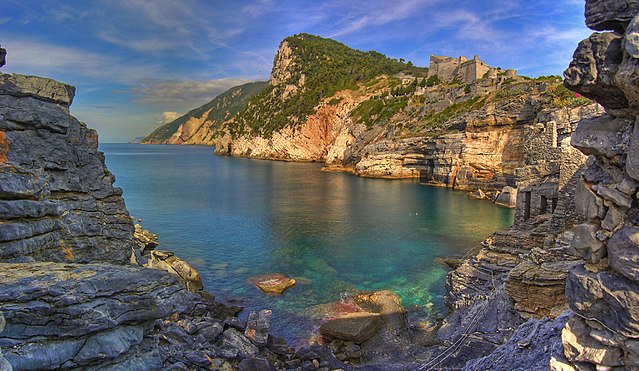
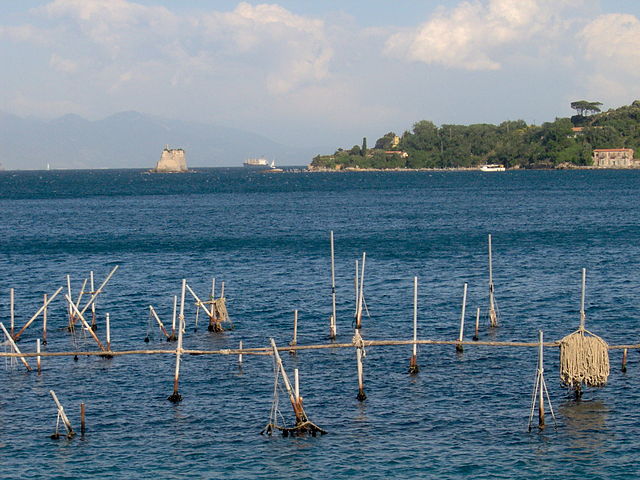
The gulf attracted another English writer too: Lord Byron. He used to swim across the gulf from Portovenere to visit his friends, the Shelleys, in Lerici. At the end of a promontory in Portovenere, below the 13th century Church of San Pietro (Chiesa di San Pietro), is situated the “Byron’s Grotto” (or Cala dell’Arpaia), named in honour of the poet. According to the local legend, Byron meditated and drew inspiration for some of his poems there. The area was also visited by many Italian poets and writers: Montale, D’Annunzio, Filippo Tommaso Marinetti… Even Dante and Petrarch had loved and usually visited the gulf too.
